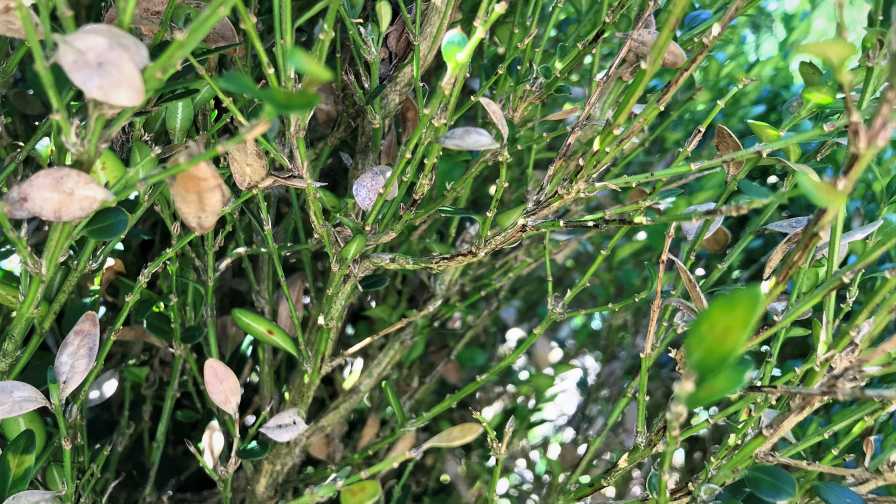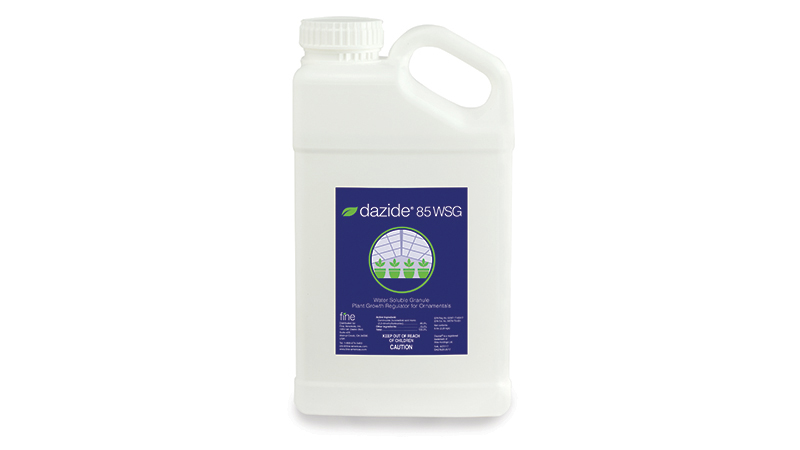New Horticulture Research Grants Zero In on Pollinators, Disease Control, and More
 The Horticultural Research Institute (HRI), a foundation of AmericanHort, recently announced its portfolio of research projects to be funded in 2020. These projects fit into the cadre of research priorities established in support of a new strategic vision. They include quantifying plant benefits, creating innovative solutions, gathering consumer insights, and producing practical and actionable solutions. A total of $345,800 will be awarded this year.
The Horticultural Research Institute (HRI), a foundation of AmericanHort, recently announced its portfolio of research projects to be funded in 2020. These projects fit into the cadre of research priorities established in support of a new strategic vision. They include quantifying plant benefits, creating innovative solutions, gathering consumer insights, and producing practical and actionable solutions. A total of $345,800 will be awarded this year.
“HRI has new research priorities in place to quantify plant benefits, encourage innovative solutions, better understand consumer preferences, and provide practical solutions. These will help shape what projects HRI funds, starting this year,” says Gary Knosher, HRI President. “I continue to be amazed by the industry’s support of HRI’s mission and initiatives. Thank you to all in the industry who contribute.”
The Horticultural Research Institute’s mission is to direct, fund, promote, and communicate horticulture research. Supporting research that challenges current methods and bridges the divide between businesses and the consumer is how HRI helps build prosperous businesses, advance the green industry, and fulfill its core vision.
Here’s a closer look at some of the projects tied to greenhouse production (a complete list is available here):
Benefits or Features: Which Cue is More Effective on Retail Signs? (Dr. Bridget Behe, Michigan State University)
Better understanding consumer behavior, preferences, and trends is a key HRI research priority. This project addresses that directly. Dr. Behe previously discovered that younger customers are more likely to purchase a branded plant – even when identical to a nonbranded plant – and that consumers in general want more information on signs because they cannot ascertain plant attributes by looking at it. Now Dr. Behe will take the next step and quantify and profile what cues trigger plant choice, including which benefits resonate best with which type of consumers.
Fundamental Aspects of Auxin Foliar Spray Applications to Woody Plant Cuttings (Dr. Robert Geneve, University of Kentucky)
Applying auxin as a foliar spray has several advantages over traditional quick dip methods for rooting cuttings, such as potential improved worker safety and application efficiency. Foliar auxin sprays are also becoming an integral part of propagation systems using automated, machine-assisted sticking robotics. However, not all woody species respond to foliar spray as well as a quick dip application for rooting, and there are questions concerning application timing as well as the optimal number of applications. Basic questions about auxin movement in cuttings related to spray volume, single vs. multiple applications, and use of a surfactant will be addressed.
Enhancing the Performance of SSG as a Biocontrol Agent for Ornamental Plant Disease Mitigation (Dr. Ping Kong, Virginia Tech)
Boxwood blight, caused by Calonectria pseudonaviculata, is a huge concern in the nursery and landscape management industries. Control options are currently limited to cultural practices and fungicides. Biocontrol is a missing component. Bacterial endophytes (organisms that spend at least part of their life in plant roots) have been identified that show potential to reduce C. pseudonaviculata in culture. A team led by Dr. Kong will further evaluate these endophytes for real world applicability.
Developing Environmental and Cultural Protocols for the Production of Containerized Succulents in Greenhouses and Nurseries (Dr. Roberto Lopez, Michigan State University)
Consumers adore succulents. Statistics show a 79% increase in production from 1998 to 2014, in response to consumer demand. More than 1,000 genera of succulents (11,000+ species) exist, and propagation and finishing needs vary greatly among them. Dr. Lopez and his team have identified cultivars to optimize propagation and the production growing environment to reduce growing time and increase profitability.
A Sustainable Approach to Phytophthora-Infested Landscape Beds: the Search for Tolerant or Resistant Annuals and Herbaceous Perennials (Dr. Inga Meadows, North Carolina State University)
Phytophthora root rot and stem blight affect more than 100 of the most popular and most commonly used landscape perennials and annuals, including annual vinca, petunia, and daylily, throughout the U.S. Current recommendations for infested landscape beds are either impractical or not economically feasible for landscapers and homeowners. Previous research has given hope of reducing inoculum through the use of crop rotation with resistant plants. Dr. Meadows previously identified 14 cultivars of flowering annuals and eight cultivars of herbaceous perennials that performed good to excellent in landscape beds heavily infested with Phytophthora. The team will test additional cultivars.
Using Grow Wise, Bee Smart and Oregon Bee Project Plant Picks to Promote Pollinator-Attractive Nursery Plants in Oregon (Dr. Andony Melathopoulos, Oregon State University)
Pollinator health continues to be a focus for our industry. Many growers have responded to public concerns and now adhere to HRI’s recommended best management practices geared to better protect pollinators during production. They have also shifted their crop selection to include more plants known to attract pollinators to meet consumer needs. However, little research has been conducted to evaluate the actual impact of these changes. Dr. Melathopoulos and his team will assess the impact of HRI’s Grow Wise, Bee Smart and the Oregon Bee Project’s Bee Plant Picks on the public’s recognition of our industry’s efforts and increased sales and profits for growers.
Automation in Container Nursery Weed Control (Dr. Joe Neal, North Carolina State University)
Weeds compete with crops for water, nutrients, and space. One estimate cites that a single large crabgrass plant can reduce the dry weight of a containerized Japanese holly as much as 60%. Herbicides can help; however, sufficient options do not exist to control broadleaves in containers after emergence. Therefore, growers resort to hand labor, which can cost as much as $4,000 per acre per year. Mechanization is a potential fix. Dr. Neal and his team plan to develop and test a prototype application system capable of delivering targeted postemergent or preemergent herbicides to the containers.
In Defense of Nativars: Comparing the Conservation Value of Native Milkweed Cultivars and Straight Species for Monarch Butterflies, Bees, and Other Pollinators in Small Gardens (Dr. Daniel Potter, University of Kentucky)
The debate over the value of straight species vs cultivars of native plants has clouded consumers’ understanding of the value of certain plants to monarch butterflies. Nativars are variants of native species selected and vegetatively propagated for desirable attributes, such as plant stature, flower or leaf color, or bloom period. Do nativars of milkweed provide the same benefits to monarchs? Dr. Potter and his team will help clear the confusion and strengthen the horticulture industry’s position that native plant cultivars of milkweed can have the same or even higher conservation value than straight species.
Biocontrol Agents for the Vector of Rose Rosette Virus (Dr. Ioannis Tzanetakis, University of Arkansas)
Rose rosette disease (RRD) threatens landscape and production roses alike, especially since it reemerged recently in California. A plant virus is responsible for this disease, and it is transmitted, in part, by a very small, eriophyid mite. Being a plant virus, control measures are challenging, as traditional fungicides are ineffective; however, one strategy focuses on control of the vectoring mite. Dr. Tzanetakis will work on predatory mites with the potential to control the vectoring









